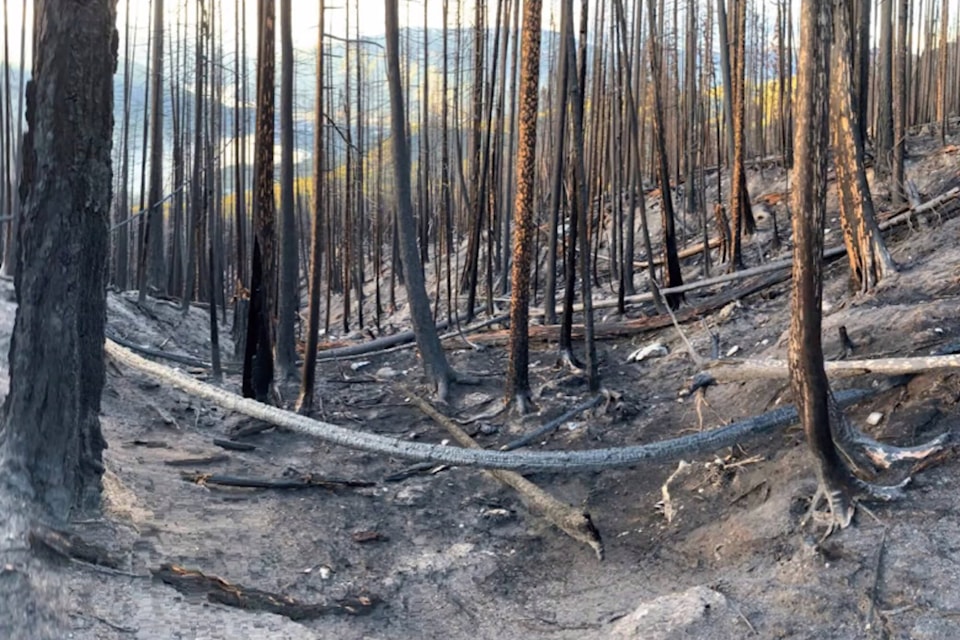BC Timber Sales will be proceeding with plans for salvage logging and mitigation work in the Sicamous Creek and Wiseman Creek watersheds.
The B.C. government agency says so in a May 31 letter to the District of Sicamous – despite concerns raised for the safety of residents of the Sicamous Creek Mobile Home Park.
On June 3, a second evacuation alert was issued for the mobile home park. It was prompted by concern expected precipitation would increase the risk of a landslide in the watersheds above.
That concern was drive by a study of the watersheds by BGC Engineering, conducted for the Columbia Shuswap Regional District (CSRD). BGC determined the 2021 Two Mile Creek wildfire had increased the likelihood of a slide occurring.
In response to BC Timber Sales’ (BCTS) plans to salvage harvest within the watersheds, both Sicamous council and the CSRD called for a moratorium on logging. BGC recommended no salvage logging take place in areas affected by the wildfire until 2024, when the situation could be reassessed.
Subsequent to that, representatives from BCTS gave presentations to both the CSRD board and Sicamous council. It was explained “post-fire conditions are contributing to a high hazard rating that includes a legacy network of non-status roads and trails that were not deactivated.”
During the presentation, BCTS shared images of what were referred to as old logging roads and culverts that had either been compromised or had diverted the flow of water. Mitigation work was proposed to occur along with the salvage operation.
Read more: Former Salmon Arm engineer says abandoned logging road contributed to fatal B.C. landslide
Read more: Old logging roads, culverts part of mitigation work planned during salvage harvest near Sicamous
“To get to these areas, we basically need to run a buncher down to clear them, and then run excavators in to deactivate them, and it just makes more sense to do that as part of a salvage program versus on its own because it’s very hard to get the timber out of there and recover any value otherwise,” BCTS woodlands supervisor Wes Wolfe told the CSRD board.
Subsequent to the destructive flooding and debris flow events that occurred in B.C. near the end of 2021, experts raised concern that blame was being placed entirely on climate change. It was argued old, non-deactivated logging roads were also suspect.
“Research supports that concentrated/redirected water from resource (logging) roads and trails is the single greatest cause of landslides in BC, and this has been known for several decades…” engineer Calvin VanBuskirk told the Observer.
In its letter, BCTS asserts it remains “committed to the safety of the public while conducting salvage harvesting in the Wiseman and Sicamous Creek watersheds.” This begs the question if this needed mitigation work should have been pursued years ago for, as BGC confirmed in its study, “Creeks in this area are prone to debris flow – and debris flood hazards, including major events in 1997 at Hummingbird Creek (south of Sicamous Creek), and in 1997 and 2012 at Sicamous Creek.”
It is concerning that only now the work is being driven by the need to “recover any value.”
